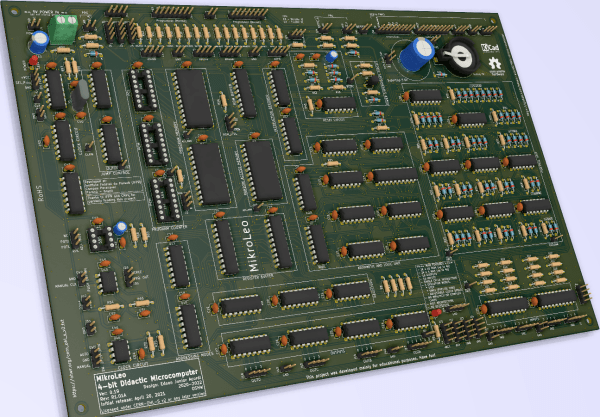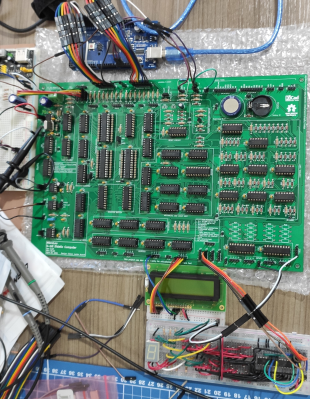[Marius Taciuc’s] latest endeavor, the B4 Thinker, offers a captivating glimpse into microcontroller architecture through a modular approach. This proof-of-concept project is meticulously documented, with a detailed, step-by-step guide to each component and its function.
Launched in 2014, the B4 Thinker project began with the ambitious goal of building a microcontroller from scratch. The resulting design features a modular CPU architecture, including a base motherboard that can be expanded with various functional modules, such as an 8-LED port card. This setup enables practical experimentation, such as writing simple assembly programs to control dynamic light patterns. Each instruction within this system requires four clock pulses to execute, and the modular design allows for ongoing development and troubleshooting.
Continue reading “Building A Microcontroller From Scratch: The B4 Thinker Project”



 Harvard RISC architecture built entirely from 74HCT series logic
Harvard RISC architecture built entirely from 74HCT series logic







